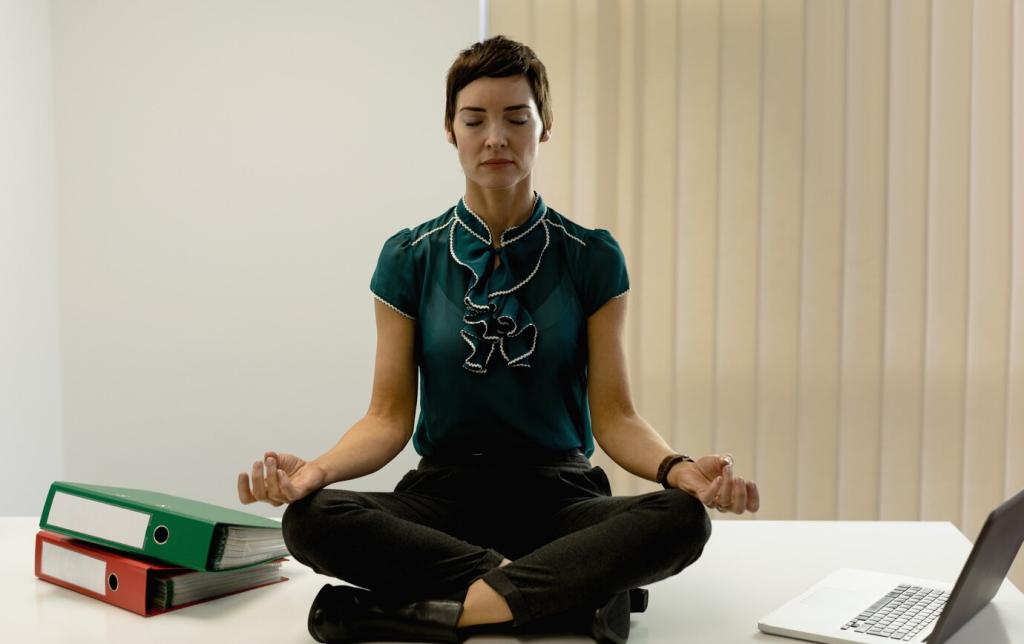Breathing Techniques to Find Inner Peace
Today’s chosen theme: Breathing Techniques to Find Inner Peace. Inhale a sense of possibility, exhale what weighs you down. Together we will explore practical, science-backed breathing practices and heartfelt stories that invite steadiness into your day. Breathe with us, share your reflections, and subscribe for weekly prompts that keep your inner calm within easy reach.


The Science of Calm: How Breath Shapes Your Nervous System
Longer, softer exhales stimulate the vagus nerve, nudging the body toward the parasympathetic state. Research links slow breathing to increased heart rate variability, a marker of resilience. Try extending your exhale by two counts, then tell us in the comments how your pulse and mood shift.
The Science of Calm: How Breath Shapes Your Nervous System
Breathwork gently raises your comfort with carbon dioxide, which can reduce panic sensations. When you slow down, CO2 rises slightly, signaling safety rather than alarm over time. Practice patiently, notice less urgency, and share your small wins to encourage someone else today.
Foundations First: Posture, Pace, and Awareness
Sit tall or lie comfortably, letting the ribs float and the belly soften for diaphragmatic movement. Imagine space between each vertebra, collarbones broad. Small adjustments invite fuller breaths. Snap a photo of your setup and share tips that make your practice corner feel welcoming.


Foundations First: Posture, Pace, and Awareness
A steady rhythm settles the nervous system. Try five seconds in, five seconds out for balance, or the classic 4-7-8 to unwind. Keep experimentation playful. If a count feels strained, shorten it. Comment with your favorite cadence so others can try it this week.
Techniques for Inner Peace: Step-by-Step Guides
Inhale through the nose for four, hold gently for seven, exhale softly for eight. Repeat four cycles. This pattern can quiet mind chatter and prime rest. If the hold feels tight, shorten it. Tell us how your sleep changes after three nights of consistent practice.

Techniques for Inner Peace: Step-by-Step Guides
Inhale four, hold four, exhale four, hold four—like tracing a square with your breath. This technique steadies attention in challenging moments. Visualize the square’s corners as you count. Comment about a stressful situation where box breathing helped you respond rather than react.

Stuck at a red light, Sam noticed shoulders creeping toward ears. Three minutes of nasal, five-second breathing softened the tension. By the next light, frustration ebbed, and music finally sounded warm again. Share your micro-moment story—we may feature it in a future community roundup.
Stories That Breathe: Real Moments of Stillness
During a toddler meltdown, Maya put one hand on her heart, one on her belly, and silently boxed four rounds. Her tone softened; her child mirrored the slower rhythm. Peace arrived without a speech. Parents, what breath cues work in your home? Add your wisdom below.
Stories That Breathe: Real Moments of Stillness
Grow Your Practice: Reflection, Community, Consistency
Track What You Feel, Not Just Counts
After each session, note mood, tension level, and one sentence about your breath’s texture. Patterns reveal themselves. Did a longer exhale help? Did posture matter? Share your template or download ours by subscribing—then compare notes with fellow readers next week.
Build a Ritual You Crave
Pair breathwork with something pleasant: soft light, favorite tea, a song you love. Rituals keep practice inviting. If three minutes feel easy, celebrate before adding more. Comment with your ritual recipe so others can borrow ingredients that make peace feel natural.
Join the Conversation, Grow Together
Ask questions, report tiny victories, and support newcomers. Collective stories motivate on hard days. Tell us your biggest barrier to practicing and we’ll create a targeted guide. Subscribe for weekly check-ins that keep your breathing techniques consistent, compassionate, and joyfully human.
Join our mailing list
